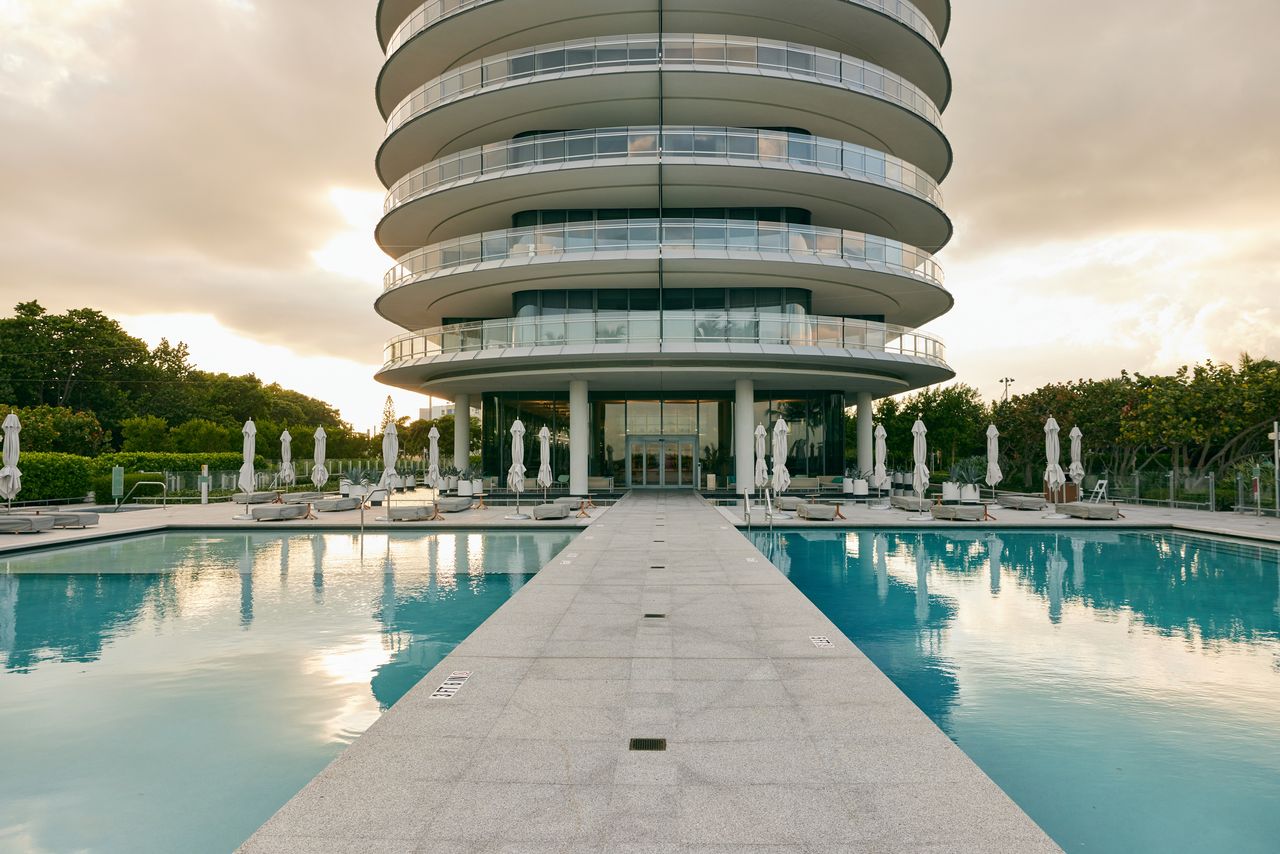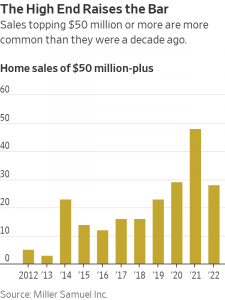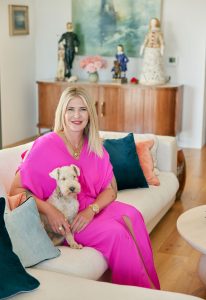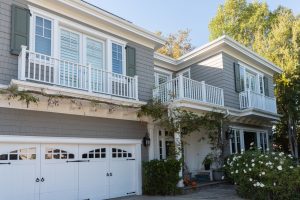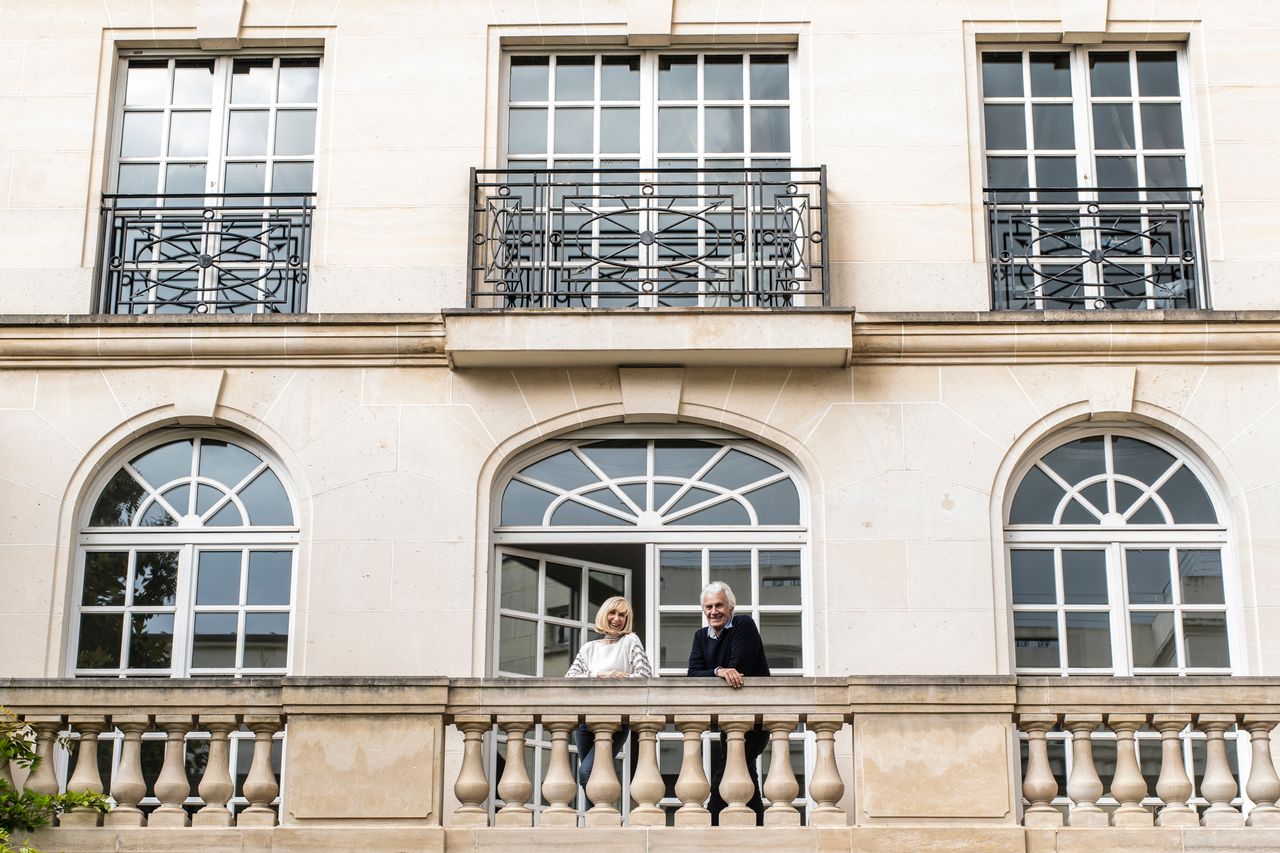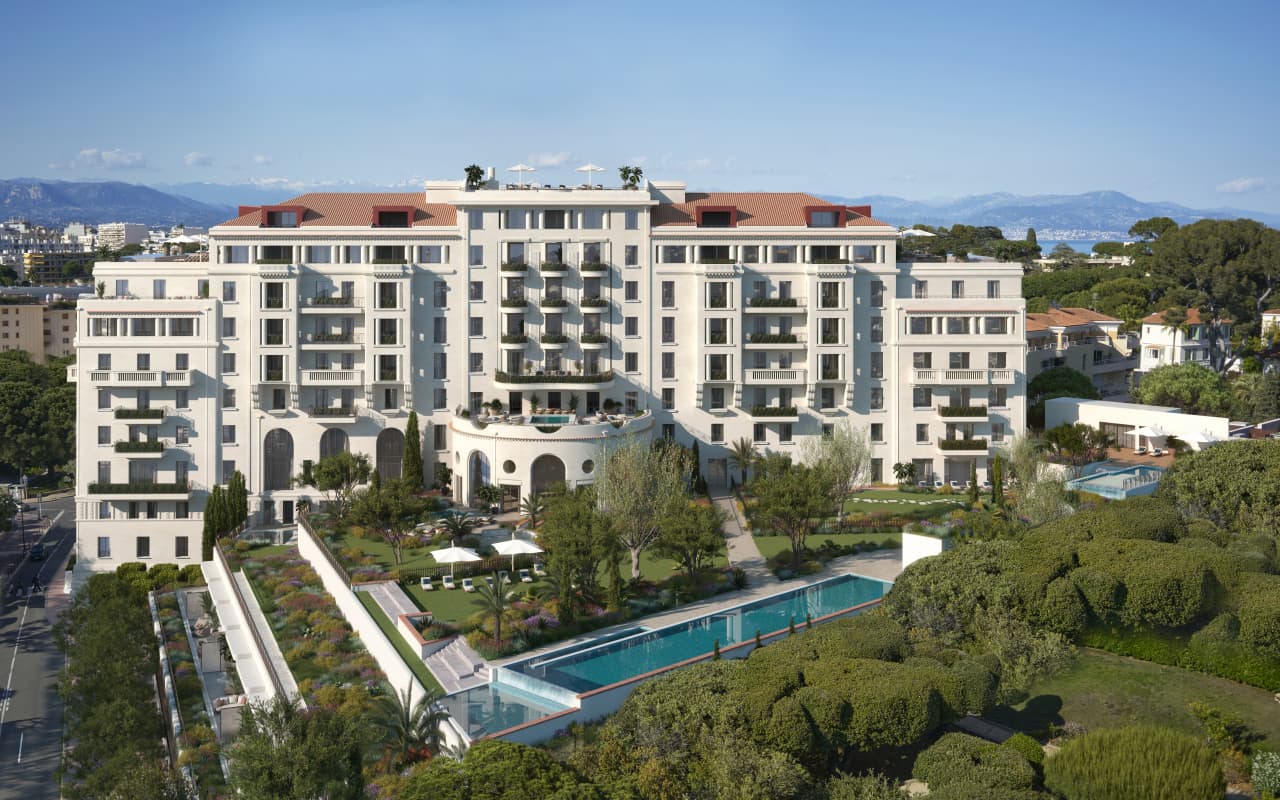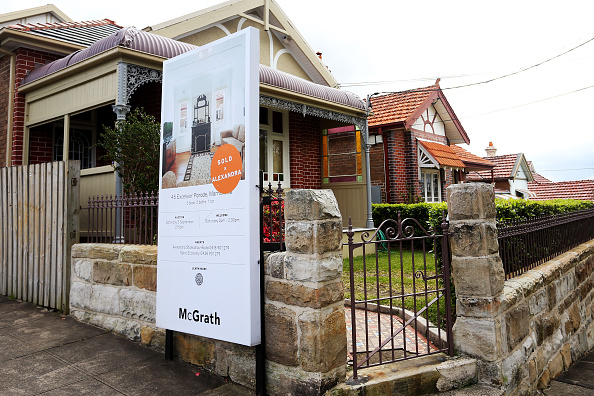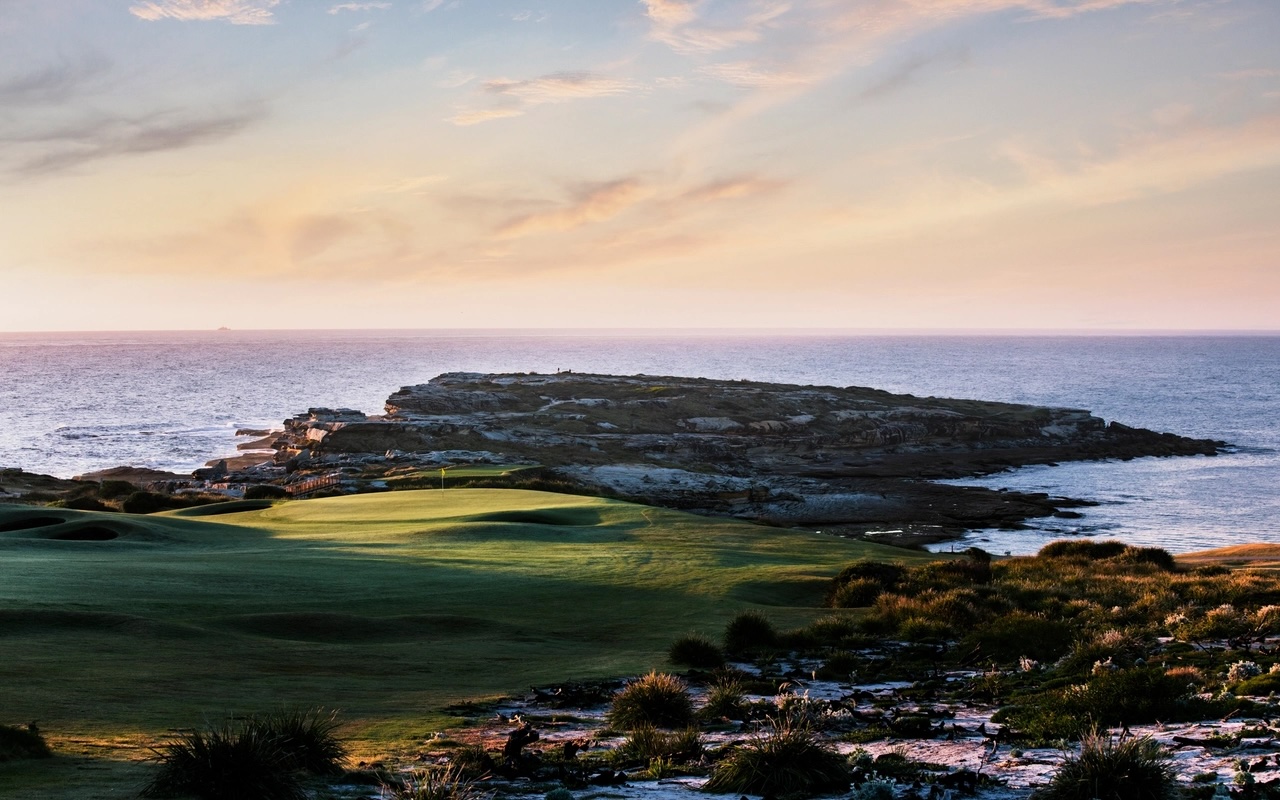Ten Years Ago, $50 Million Home Sales Turned Heads. These Days, $100 Million Homes Do.
A look at how luxury markets in Miami, Los Angeles and New York have changed in the past decade, plus what $5 million could buy you in 2012 versus today
In October 2012, The Wall Street Journal launched its Mansion section with the goal of covering high-end real estate in the U.S. and around the world. It has been a busy 10 years.
Market observers were shocked that year, when the family of Russian billionaire Dmitry Rybolovlev paid $88 million for a penthouse at Manhattan’s 15 Central Park West. But that deal turned out to be just the beginning. There were 48 sales of $50 million or more in 2021, up from five in 2012, according to data from real-estate appraiser Jonathan Miller.
Now, nine-figure sales are more common. There were eight sales of $100 million or more in 2021, compared with one in 2012, said Mr. Miller. In 2014, tech mogul Michael Dell paid $100.47 million for a condo at One57, a roughly 1,000-foot tower on Manhattan’s Billionaires’ Row.
Meanwhile, billionaire Ken Griffin broke the $200 million barrier in 2019 when he paid some $238 million for a condo on Billionaires’ Row. The deal holds the record for the highest price ever paid for a home in the U.S. The average annual rate of inflation over the past 10 years was 2.3%.
Mansion tracked all these stories, as well as some where the pipe dreams didn’t work out, such as the Bel-Air mega mansion called The One that looked for a buyer at $500 million but settled for $126 million earlier this year at auction, handing developer Nile Niami a loss in the tens of millions of dollars.
Mansion also found homeowners who spent hundreds of thousands of dollars to relocate a single tree, or who built playhouses with working refrigerators and running water. One property owner created a 120-room, roughly $100 million replica of the French palace Versailles on an unassuming side street on Long Island. Another installed a commercial-grade barroom in his California home for about $350,000, while a Kentucky resident built a 3,000-square-foot personal nightclub. One Illinois homeowner paid some $2 million to add a cigar lodge to his lakefront property. Developers, meanwhile, created signature scents for their homes, or included Lamborghinis in sales.
Some feared the Covid pandemic would bring it all to an end. But after a brief pause in early 2020, the real-estate market came roaring back amid the shift to remote work. For the luxury market, the pandemic-fuelled surge was “the biggest housing boom of the modern era,” said Mr. Miller.
In August 2020, WhatsApp co-founder Jan Koum paid $125 million for Jeffrey Katzenberg’s Beverly Hills estate. In October 2021, venture capitalist Marc Andreessen and his wife, Laura Arrillaga-Andreessen, bought fashion mogul Serge Azria’s Malibu compound for $177 million.
While prices have soared in the past decade, the locations of the country’s most expensive home markets have changed little, remaining concentrated in New York, California and Florida. To get a sense of how high-end real estate has performed over the past 10 years in those areas, the WSJ examined what a $5 million budget could buy in 2012 versus today in Miami, Los Angeles and New York.
Miami
Miami’s luxury real-estate has seen seismic changes.
In 2012, a majority of luxury Miami buyers were international, many from Central and South America, looking for a haven for their capital, said Danny Hertzberg, a real-estate agent with the Jills Zeder Group at Coldwell Banker in Miami Beach. Then came the pandemic, and with it remote work and a strong dollar. Working from home in particular shifted Miami’s luxury pool to primarily U.S. buyers, from cities such as San Francisco, New York and Chicago, Mr. Hertzberg added. And while many Florida buyers once sought vacation properties, he said, most now are primary-home buyers—with the budgets to match.
As a result, prices in the Miami area have skyrocketed. “The first quarter of 2021 was like no market I’ve ever seen in my entire life,” said Nelson Gonzalez, a Miami real-estate investor and a broker at Berkshire Hathaway HomeServices EWM Realty who has worked in the area for about 30 years. “It was a frenzy. People were fighting over $20 million houses.”
The market has slowed somewhat, he added, but prices have yet to decline.
The demand caused a surge in development, with luxury housing springing up over the past 10 years even in previously undesirable areas. A prime example is Sunset Harbour on the bay side of Miami Beach, where warehouses and auto-repair shops have given way to some of the trendiest retail in the city. That has led to the exponential growth of home prices nearby.
Another example is Surfside, once known for ageing buildings such as Champlain Towers South, a circa-1981 condo tower that partially collapsed last year, killing 98 people. “Surfside was nothing 10 years ago,” said Mr. Hertzberg.
Today, newly built condominiums in Surfside, including Four Seasons Residences at the Surf Club and Arte, are some of the most expensive in the Miami area, fetching more than $3,000 a square foot, about triple what condos in the area would have cost in 2012. A decade ago, “nobody could have imagined you’d get those numbers,” he said.
Back in 2012, $5 million would have bought a house or a new condo on the waterfront in a prime area, such as Miami Beach’s South of Fifth neighbourhood. That price seemed astronomical then, said real-estate agent Victor Harary of Compass. Now, $5 million won’t buy a waterfront home in any of the prime areas, he added.
Between January and August of 2012, there were 64 sales between $5 million and $10 million in the Miami metro area, according to data from Redfin. In the 2022 period there were 381.
When Timoni West decided to move to Miami from Austin, Texas, this year, she wanted a waterfront condo in Miami Beach, ideally south of 50th street. She had ruled out Eighty Seven Park, a waterfront condominium completed in 2019, because of the location in still-emerging North Beach. “I thought it was too far north—I wasn’t taking it seriously,” said Ms. West, 42, who works in the tech industry.
Ultimately, however, the building’s ocean views, architecture and amenities won her over. Working with Mr. Harary, she paid $4.8 million in June for a two-bedroom, roughly 1,600-square-foot unit with a terrace.
By contrast, Mr. Gonzalez recalled selling a waterfront house in Miami Beach’s sought-after Sunset Islands for $5.6 million in 2012. The buyer, a South American, bought the property as an investment, he said, and renovated the circa-1940s house. The lot was about half an acre—large for Miami Beach. When the property sold again this year, the six-bedroom, roughly 5,000-square-foot house was considered a teardown, he said, with most of the value in the land.
The price? $25.5 million.
Los Angeles
In Los Angeles, the luxury real-estate market also has soared. Between January and August 2012, there were 174 sales between $5 million and $10 million in the metro area, according to Redfin. In the 2022 period there were 685 sales.
At the ultrahigh end in 2012, there were 92 home sales over $10 million on the city’s west side, which includes the neighborhoods of Beverly Hills, Beverly Hills Post Office, Bel-Air, Malibu, Sunset Strip, Holmby Hills, Hancock Park, Brentwood and Pacific Palisades, says Christophe Choo of Choo Real Estate Group. So far in 2022, there have been 256 sales over $10 million in those neighbourhoods, with 14 over $20 million in Bel-Air alone.
The biggest difference between what $5 million bought in 2012 and what it buys today is mostly location, says Angelo Fierro, a real-estate agent with Compass. It is still possible to get what he calls a spectacular house in Bel-Air, for example, but it would be in Upper, or Northern, Bel-Air, which has smaller lots and is farther up the hill than Lower, or Southern, Bel-Air, which is closer to Beverly Hills and the Bel-Air Country Club. A $5 million house in Lower Bel-Air in 2022 would need work, he says.
In 2012, Barbara Boxer, 72, an attorney and venture-capital investor and fund founder, and Richard Boxer, 75, a urologist at UCLA, bought a five-bedroom, six-bathroom, 6,000-square-foot house in Lower Bel-Air for $4.995 million. “We felt like we got good value,” says Dr. Boxer. The Boxers had moved to Los Angeles from Miami to be closer to their granddaughter, who was then 3 years old.
In 2017, the Skirball Fire ravaged the Bel-Air neighbourhood. Their house survived, but had extensive smoke damage that took 14 months to repair. That year, the Boxers bought a vacation home in Park City, Utah. After the pandemic started in 2020, they began spending more time in Park City, where their son and his family now live.
In March, the couple sold their Bel-Air house for $7 million and moved to Utah full time. Ms. Boxer says their decision was in part because of a rise in insurance costs, and the state’s current and proposed tax laws.
For Uyen-Uyen “Winnie” Tong and her husband, Alan Razzaghi, picking where to live was mostly about the distance to their children’s school. Upper Bel-Air was more convenient than Lower Bel-Air. The couple, both entrepreneurs, bought a 4,895-square-foot, six-bedroom, six-bathroom modern house with a large swimming pool in March for $5.31 million, slightly above its listing price of $5 million. They beat out seven bidders, their agent told them.
Ms. Tong calls it their dream home. The couple was living in a 1,800-square-foot, two-bedroom duplex with their two children, ages 9 and 13, and their dog during Covid when they realised they wanted more space. Their new house has lots of light and high ceilings. “It hit everything on the checklist,” she says.
New York
While the New York market has been volatile for years, and was among the hardest hit during the pandemic, its trajectory over the past 10 years is clear: Prices have shot way up.
In 2012, the median price for an apartment in Manhattan, the nexus of New York’s luxury market, was $835,000 and the average price per square foot was $1,086, according to Douglas Elliman.
By the third quarter of 2022, the median price had jumped by about 38% to $1.15 million, and the average price per square foot had surged by about 49% to $1,618.
There were 994 home sales in the New York metro area between $5 million and $10 million from January to August 2022. In 2012, there were 222 sales at that price, according to brokerage Redfin.
Manhattan saw a wave of new construction over the decade, with each building seemingly taller and more luxurious than the last. Central Park Tower, for example, recently became the tallest primarily condo building in the world, at 1,550 feet.
At times, particularly in the two years before the pandemic, the surge in new construction led to a downward drag on prices as developers jostled for buyers. Later, when the Covid crisis hit, the city was shut down, bringing the market to a near halt.
Perhaps most notably over the decade, there was a shift in Manhattan’s luxury market from uptown to downtown, as a new generation sought less-conventional luxury areas.
Downtown properties began to sell at prices comparable to coveted homes around Central Park. Gleaming glass high-rises sprouted up in city neighbourhoods long overlooked by residential developers: the Lower East Side, the Financial District and Brooklyn. At the same time, an amenities arms race began that lured buyers with perks such as pools, climbing walls, basketball courts and bowling alleys.
When jazz musician Massimo Biolcati and his wife, architectural designer Miranda Danusugondo, went apartment hunting last year on the Lower East Side, they found a fresh inventory of luxury units that wouldn’t have existed a decade ago, when they first moved to the area.
They settled on Essex Crossing, a multibillion-dollar development with residential housing, retail and offices. Their penthouse at One Essex Crossing on Broome Street is 1,851 square feet with three bedrooms, two private terraces, wide-plank European Oak flooring, 10-foot ceilings and marble bathrooms. Building perks include two glass-walled “amenity peninsulas” with space for lounging and grilling, as well as a fitness studio and playroom.
The price—$4.95 million, or about $2,700 a square foot—was more than the couple wanted to spend, they said, but they were eager to remain in the neighbourhood. “It was sort of like, ‘Can we scrape together a little more money,’ ” Mr. Biolcati said.
A decade ago, $5 million deals were rare on the Lower East Side, said Pamela D’Arc, a luxury agent with Compass.
In 2012, she represented the buyer of a $4.95 million apartment on the Bowery. That price bought him about double the space. The 3,700-square-foot duplex was “like a house in a condominium building” and had 660 square feet of outdoor space on two levels. It was an outlier in terms of its style, size and price.
“Ten years ago, the Lower East Side was not what it is now,” Ms. D’Arc said. “It’s a different world.”
That unit is now on the market for $5.999 million, according to listing agent David Ghoneim of Elegran.
 Copyright 2020, Dow Jones & Company, Inc. All Rights Reserved Worldwide. LEARN MORE
Copyright 2020, Dow Jones & Company, Inc. All Rights Reserved Worldwide. LEARN MORE
This stylish family home combines a classic palette and finishes with a flexible floorplan
Just 55 minutes from Sydney, make this your creative getaway located in the majestic Hawkesbury region.
Ahead of the Games, a breakdown of the city’s most desirable places to live
PARIS —Paris has long been a byword for luxurious living. The traditional components of the upscale home, from parquet floors to elaborate moldings, have their origins here. Yet settling down in just the right address in this low-rise, high-density city may be the greatest luxury of all.
Tradition reigns supreme in Paris real estate, where certain conditions seem set in stone—the western half of the city, on either side of the Seine, has long been more expensive than the east. But in the fashion world’s capital, parts of the housing market are also subject to shifting fads. In the trendy, hilly northeast, a roving cool factor can send prices in this year’s hip neighborhood rising, while last year’s might seem like a sudden bargain.
This week, with the opening of the Olympic Games and the eyes of the world turned toward Paris, The Wall Street Journal looks at the most expensive and desirable areas in the City of Light.
The Most Expensive Arrondissement: the 6th
Known for historic architecture, elegant apartment houses and bohemian street cred, the 6th Arrondissement is Paris’s answer to Manhattan’s West Village. Like its New York counterpart, the 6th’s starving-artist days are long behind it. But the charm that first wooed notable residents like Gertrude Stein and Jean-Paul Sartre is still largely intact, attracting high-minded tourists and deep-pocketed homeowners who can afford its once-edgy, now serene atmosphere.
Le Breton George V Notaires, a Paris notary with an international clientele, says the 6th consistently holds the title of most expensive arrondissement among Paris’s 20 administrative districts, and 2023 was no exception. Last year, average home prices reached $1,428 a square foot—almost 30% higher than the Paris average of $1,100 a square foot.
According to Meilleurs Agents, the Paris real estate appraisal company, the 6th is also home to three of the city’s five most expensive streets. Rue de Furstemberg, a secluded loop between Boulevard Saint-Germain and the Seine, comes in on top, with average prices of $2,454 a square foot as of March 2024.
For more than two decades, Kyle Branum, a 51-year-old attorney, and Kimberly Branum, a 60-year-old retired CEO, have been regular visitors to Paris, opting for apartment rentals and ultimately an ownership interest in an apartment in the city’s 7th Arrondissement, a sedate Left Bank district known for its discreet atmosphere and plutocratic residents.
“The 7th was the only place we stayed,” says Kimberly, “but we spent most of our time in the 6th.”
In 2022, inspired by the strength of the dollar, the Branums decided to fulfil a longstanding dream of buying in Paris. Working with Paris Property Group, they opted for a 1,465-square-foot, three-bedroom in a building dating to the 17th century on a side street in the 6th Arrondissement. They paid $2.7 million for the unit and then spent just over $1 million on the renovation, working with Franco-American visual artist Monte Laster, who also does interiors.
The couple, who live in Santa Barbara, Calif., plan to spend about three months a year in Paris, hosting children and grandchildren, and cooking after forays to local food markets. Their new kitchen, which includes a French stove from luxury appliance brand Lacanche, is Kimberly’s favourite room, she says.
Another American, investor Ashley Maddox, 49, is also considering relocating.
In 2012, the longtime Paris resident bought a dingy, overstuffed 1,765-square-foot apartment in the 6th and started from scratch. She paid $2.5 million and undertook a gut renovation and building improvements for about $800,000. A centrepiece of the home now is the one-time salon, which was turned into an open-plan kitchen and dining area where Maddox and her three children tend to hang out, American-style. Just outside her door are some of the city’s best-known bakeries and cheesemongers, and she is a short walk from the Jardin du Luxembourg, the Left Bank’s premier green space.
“A lot of the majesty of the city is accessible from here,” she says. “It’s so central, it’s bananas.” Now that two of her children are going away to school, she has listed the four-bedroom apartment with Varenne for $5 million.
The Most Expensive Neighbourhoods: Notre-Dame and Invalides
Garrow Kedigian is moving up in the world of Parisian real estate by heading south of the Seine.
During the pandemic, the Canada-born, New York-based interior designer reassessed his life, he says, and decided “I’m not going to wait any longer to have a pied-à-terre in Paris.”
He originally selected a 1,130-square-foot one-bedroom in the trendy 9th Arrondissement, an up-and-coming Right Bank district just below Montmartre. But he soon realised it was too small for his extended stays, not to mention hosting guests from out of town.
After paying about $1.6 million in 2022 and then investing about $55,000 in new decor, he put the unit up for sale in early 2024 and went house-shopping a second time. He ended up in the Invalides quarter of the 7th Arrondissement in the shadow of one Paris’s signature monuments, the golden-domed Hôtel des Invalides, which dates to the 17th century and is fronted by a grand esplanade.
His new neighbourhood vies for Paris’s most expensive with the Notre-Dame quarter in the 4th Arrondissement, centred on a few islands in the Seine behind its namesake cathedral. According to Le Breton, home prices in the Notre-Dame neighbourhood were $1,818 a square foot in 2023, followed by $1,568 a square foot in Invalides.
After breaking even on his Right Bank one-bedroom, Kedigian paid $2.4 million for his new 1,450-square-foot two-bedroom in a late 19th-century building. It has southern exposures, rounded living-room windows and “gorgeous floors,” he says. Kedigian, who bought the new flat through Junot Fine Properties/Knight Frank, plans to spend up to $435,000 on a renovation that will involve restoring the original 12-foot ceiling height in many of the rooms, as well as rescuing the ceilings’ elaborate stucco detailing. He expects to finish in 2025.
Over in the Notre-Dame neighbourhood, Belles demeures de France/Christie’s recently sold a 2,370-square-foot, four-bedroom home for close to the asking price of about $8.6 million, or about $3,630 a square foot. Listing agent Marie-Hélène Lundgreen says this places the unit near the very top of Paris luxury real estate, where prime homes typically sell between $2,530 and $4,040 a square foot.
The Most Expensive Suburb: Neuilly-sur-Seine
The Boulevard Périphérique, the 22-mile ring road that surrounds Paris and its 20 arrondissements, was once a line in the sand for Parisians, who regarded the French capital’s numerous suburbs as something to drive through on their way to and from vacation. The past few decades have seen waves of gentrification beyond the city’s borders, upgrading humble or industrial districts to the north and east into prime residential areas. And it has turned Neuilly-sur-Seine, just northwest of the city, into a luxury compound of first resort.
In 2023, Neuilly’s average home price of $1,092 a square foot made the leafy, stately community Paris’s most expensive suburb.
Longtime residents, Alain and Michèle Bigio, decided this year is the right time to list their 7,730-square-foot, four-bedroom townhouse on a gated Neuilly street.
The couple, now in their mid 70s, completed the home in 1990, two years after they purchased a small parcel of garden from the owners next door for an undisclosed amount. Having relocated from a white-marble château outside Paris, the couple echoed their previous home by using white- and cream-coloured stone in the new four-story build. The Bigios, who will relocate just back over the border in the 16th Arrondissement, have listed the property with Emile Garcin Propriétés for $14.7 million.
The couple raised two adult children here and undertook upgrades in their empty-nester years—most recently, an indoor pool in the basement and a new elevator.
The cool, pale interiors give way to dark and sardonic images in the former staff’s quarters in the basement where Alain works on his hobby—surreal and satirical paintings, whose risqué content means that his wife prefers they stay downstairs. “I’m not a painter,” he says. “But I paint.”
The Trendiest Arrondissement: the 9th
French interior designer Julie Hamon is theatre royalty. Her grandfather was playwright Jean Anouilh, a giant of 20th-century French literature, and her sister is actress Gwendoline Hamon. The 52-year-old, who divides her time between Paris and the U.K., still remembers when the city’s 9th Arrondissement, where she and her husband bought their 1,885-square-foot duplex in 2017, was a place to have fun rather than put down roots. Now, the 9th is the place to do both.
The 9th, a largely 19th-century district, is Paris at its most urban. But what it lacks in parks and other green spaces, it makes up with nightlife and a bustling street life. Among Paris’s gentrifying districts, which have been transformed since 2000 from near-slums to the brink of luxury, the 9th has emerged as the clear winner. According to Le Breton, average 2023 home prices here were $1,062 a square foot, while its nearest competitors for the cool crown, the 10th and the 11th, have yet to break $1,011 a square foot.
A co-principal in the Bobo Design Studio, Hamon—whose gut renovation includes a dramatic skylight, a home cinema and air conditioning—still seems surprised at how far her arrondissement has come. “The 9th used to be well known for all the theatres, nightclubs and strip clubs,” she says. “But it was never a place where you wanted to live—now it’s the place to be.”
With their youngest child about to go to college, she and her husband, 52-year-old entrepreneur Guillaume Clignet, decided to list their Paris home for $3.45 million and live in London full-time. Propriétés Parisiennes/Sotheby’s is handling the listing, which has just gone into contract after about six months on the market.
The 9th’s music venues were a draw for 44-year-old American musician and piano dealer, Ronen Segev, who divides his time between Miami and a 1,725-square-foot, two-bedroom in the lower reaches of the arrondissement. Aided by Paris Property Group, Segev purchased the apartment at auction during the pandemic, sight unseen, for $1.69 million. He spent $270,000 on a renovation, knocking down a wall to make a larger salon suitable for home concerts.
During the Olympics, Segev is renting out the space for about $22,850 a week to attendees of the Games. Otherwise, he prefers longer-term sublets to visiting musicians for $32,700 a month.
Most Exclusive Address: Avenue Junot
Hidden in the hilly expanses of the 18th Arrondissement lies a legendary street that, for those in the know, is the city’s most exclusive address. Avenue Junot, a bucolic tree-lined lane, is a fairy-tale version of the city, separate from the gritty bustle that surrounds it.
Homes here rarely come up for sale, and, when they do, they tend to be off-market, or sold before they can be listed. Martine Kuperfis—whose Paris-based Junot Group real-estate company is named for the street—says the most expensive units here are penthouses with views over the whole of the city.
In 2021, her agency sold a 3,230-square-foot triplex apartment, with a 1,400-square-foot terrace, for $8.5 million. At about $2,630 a square foot, that is three times the current average price in the whole of the 18th.
Among its current Junot listings is a 1930s 1,220-square-foot townhouse on the avenue’s cobblestone extension, with an asking price of $2.8 million.
This stylish family home combines a classic palette and finishes with a flexible floorplan
Just 55 minutes from Sydney, make this your creative getaway located in the majestic Hawkesbury region.









